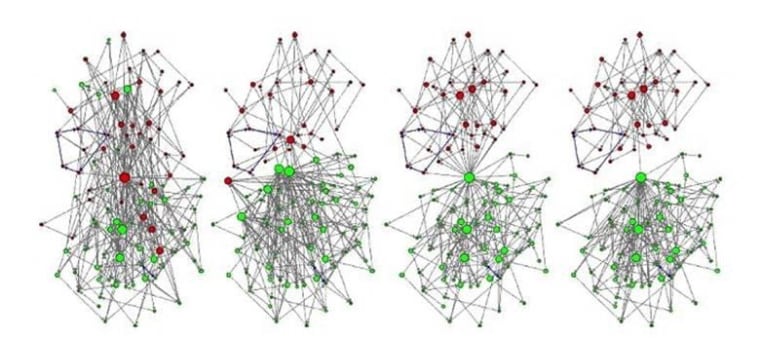Turns out physics can explain more than just why a ball bounces or a tea kettle whistles. Physics can also help explain why American politics is so polarized. We discovered this when Rachel was cited in a physics paper (pdf) published this month by the American Physical Society.
In the paper, researchers working with the Max Planck Institute for the Physics of Complex Systems devised a model of society. Red and green nodes represent people with different political persuasions, like Democrats and Republicans, and the gray lines between them represent communication, dialogue. A healthy society would look something like the image on the far left, where people have different ideas, and there's a lot of debate and discussion between them. An unhealthy society would look like the example on the far right, where there are two distinct ideologies and little-to-no communication between them.
One of the co-authors of the paper, Cristian Huepe, says "unfortunately, the fragmented state is a much more common final state" in today's world, due in part to the niche media and something the physicist refers to as "circular referencing". Rachel pointed out an example of "circular referencing" on her November 4, 2010 show when she talked about the wildly misreported story of President Obama's trip to India requiring one-tenth of the entire U.S. Navy and costing $200 million a day. In circular referencing, people only talk to like-minded people, re-enforcing the same beliefs, even if they are totally wrong. It's part of why we're always so glad when conservatives agree to come on the show -- Governors Bob McDonnell and Jan Brewer, the door's always open.
(Image from "Early fragmentation in the adaptive voter model on directed networks")
